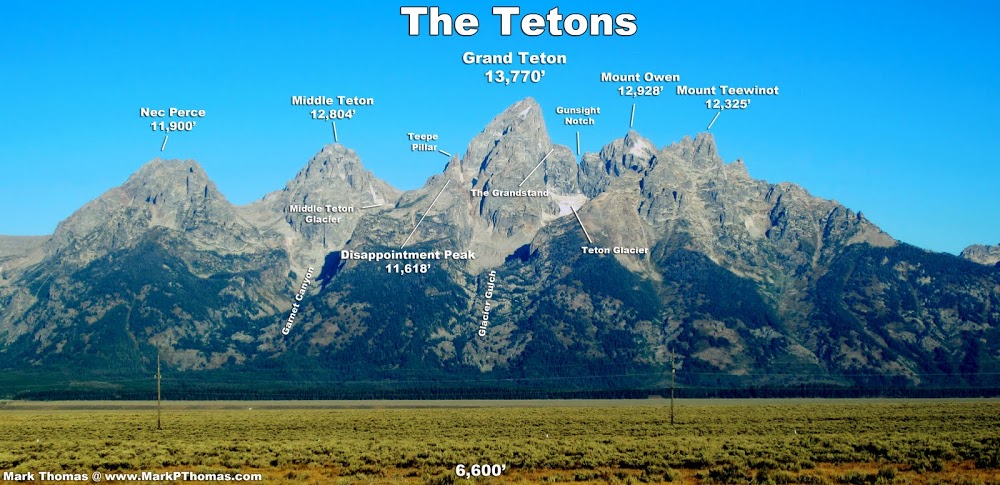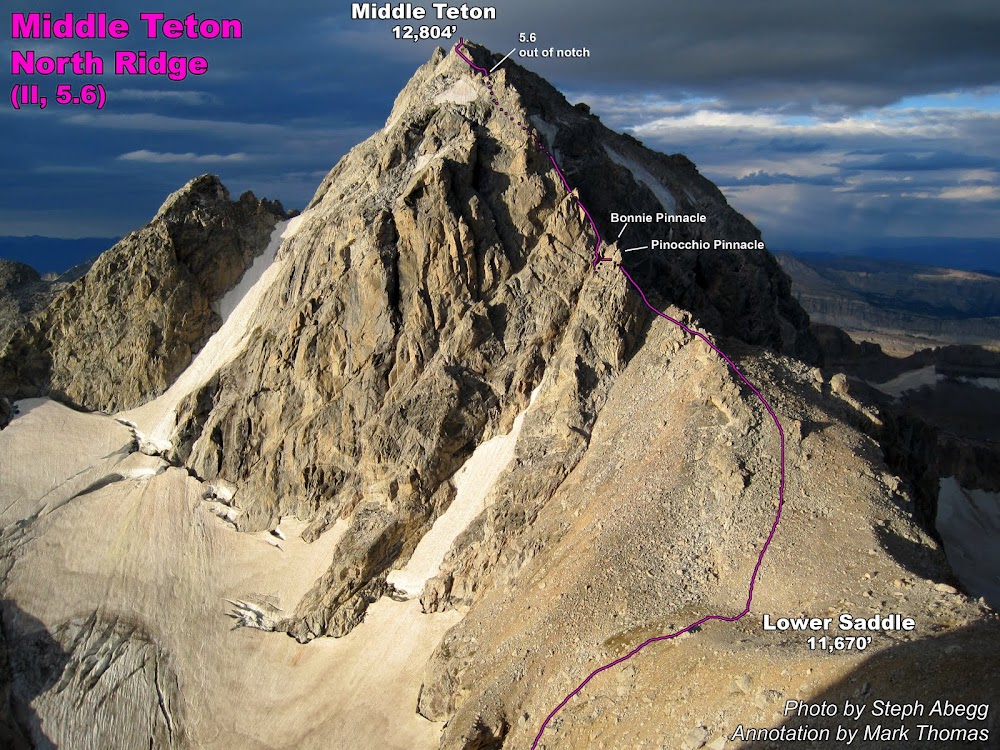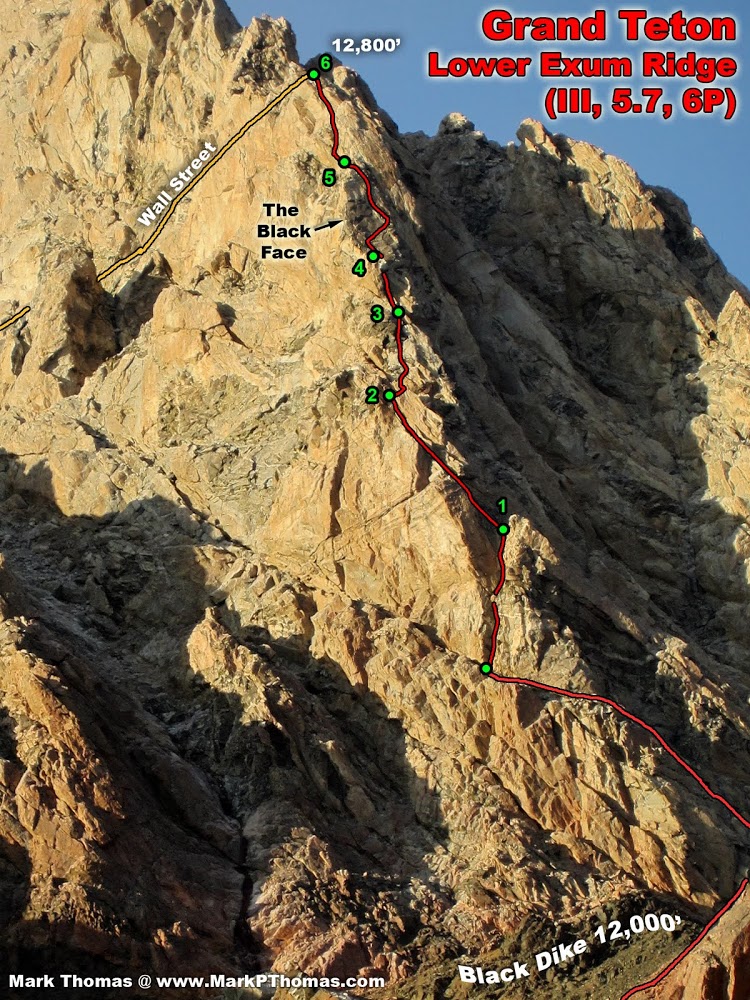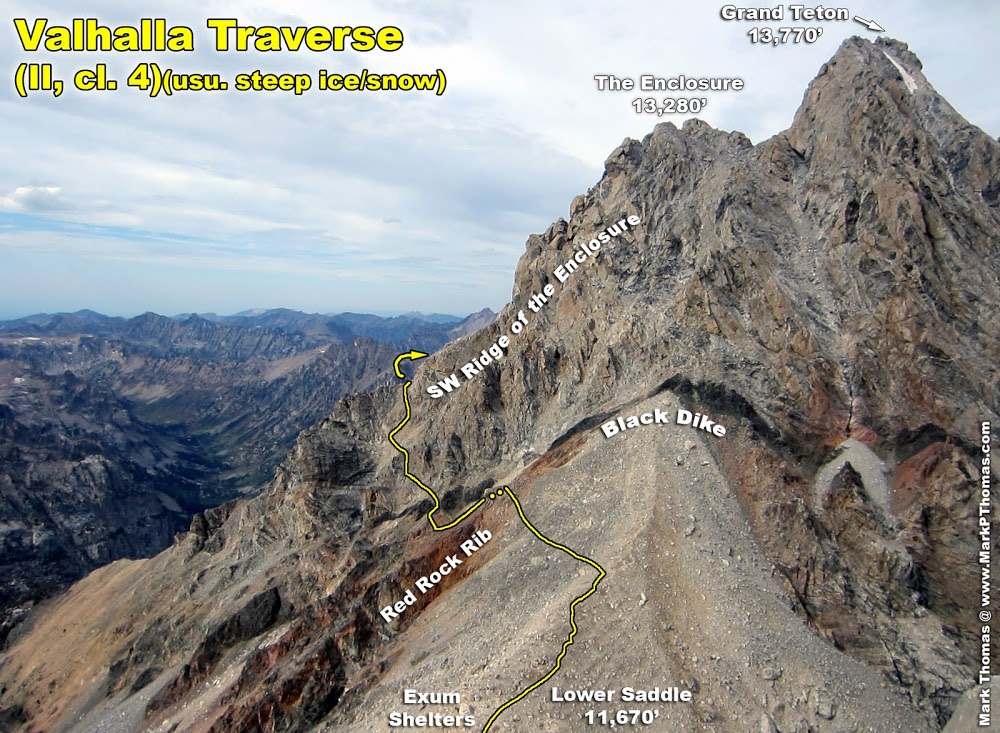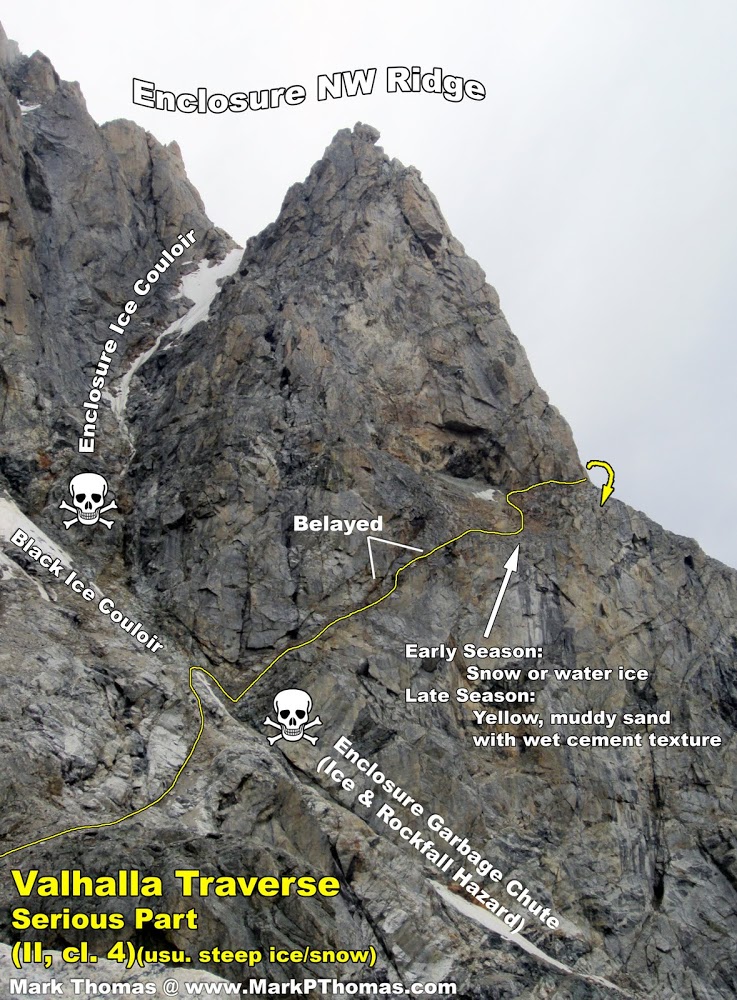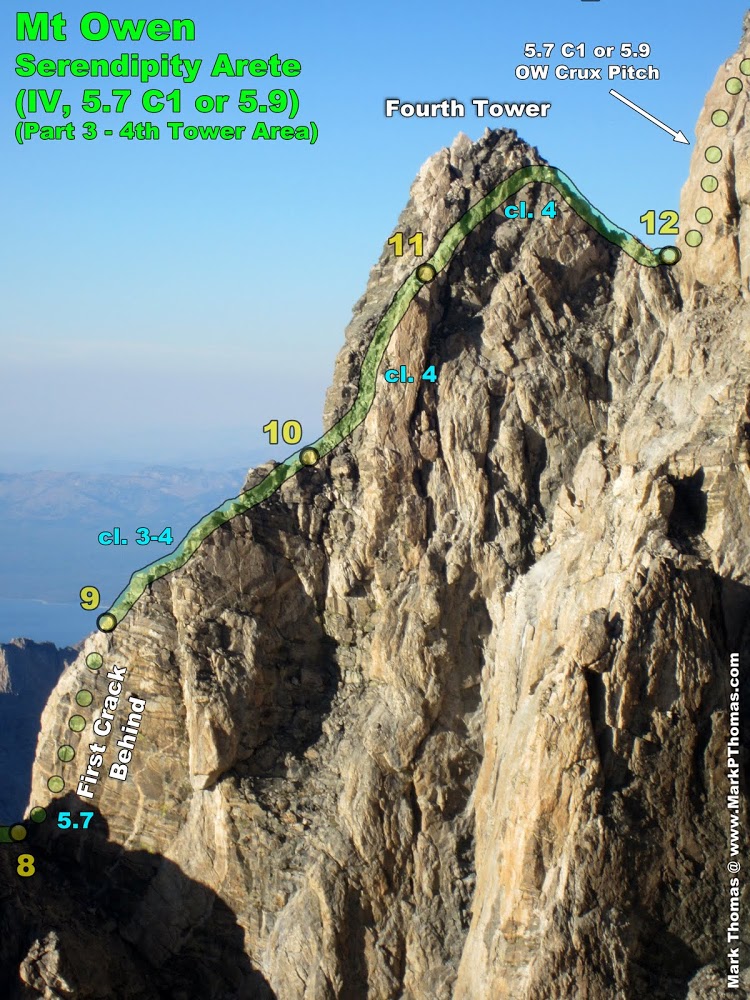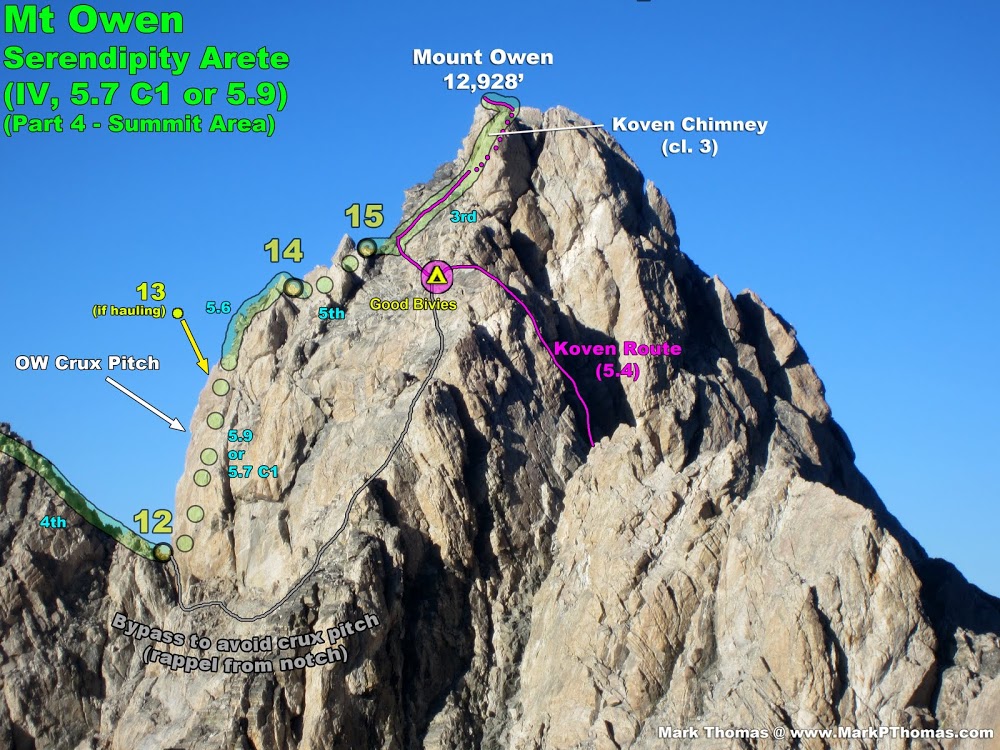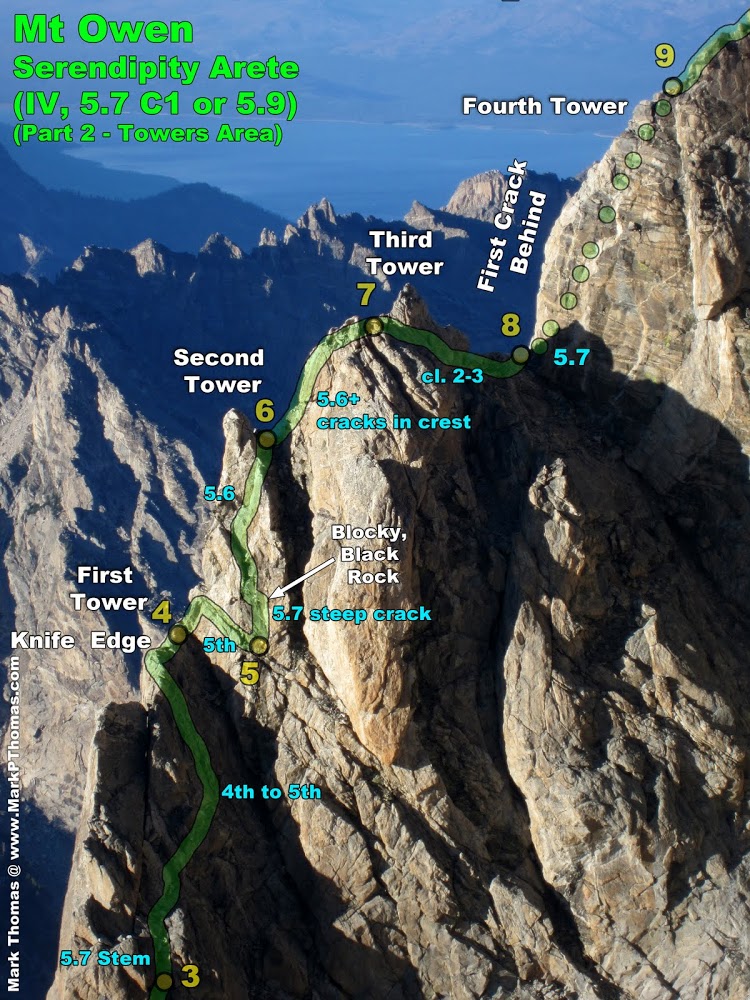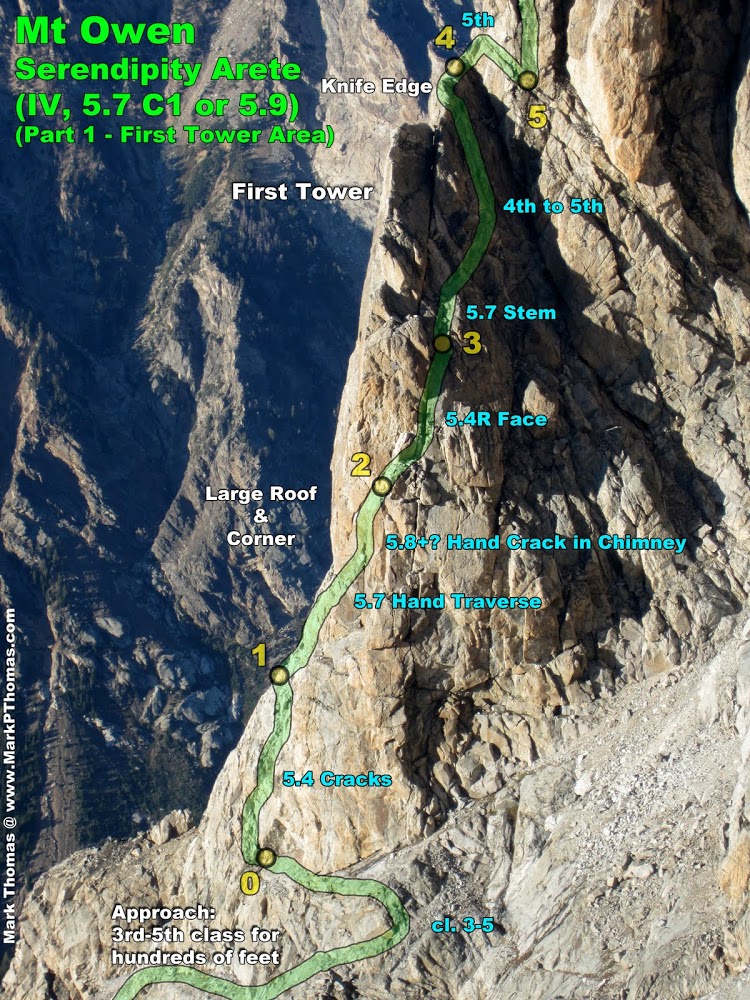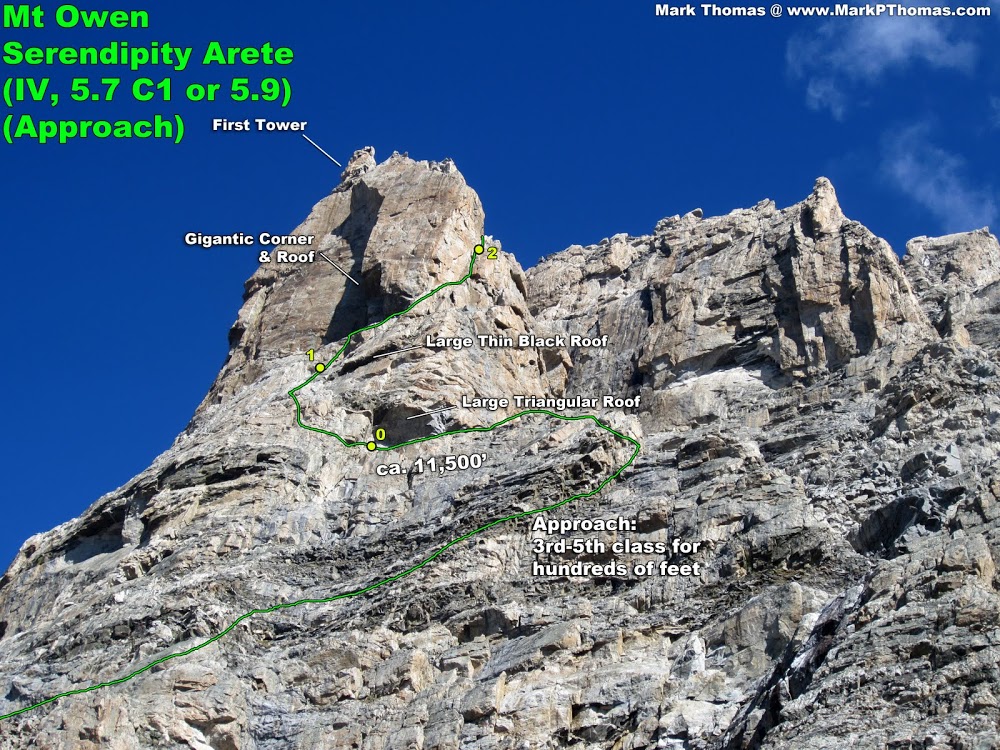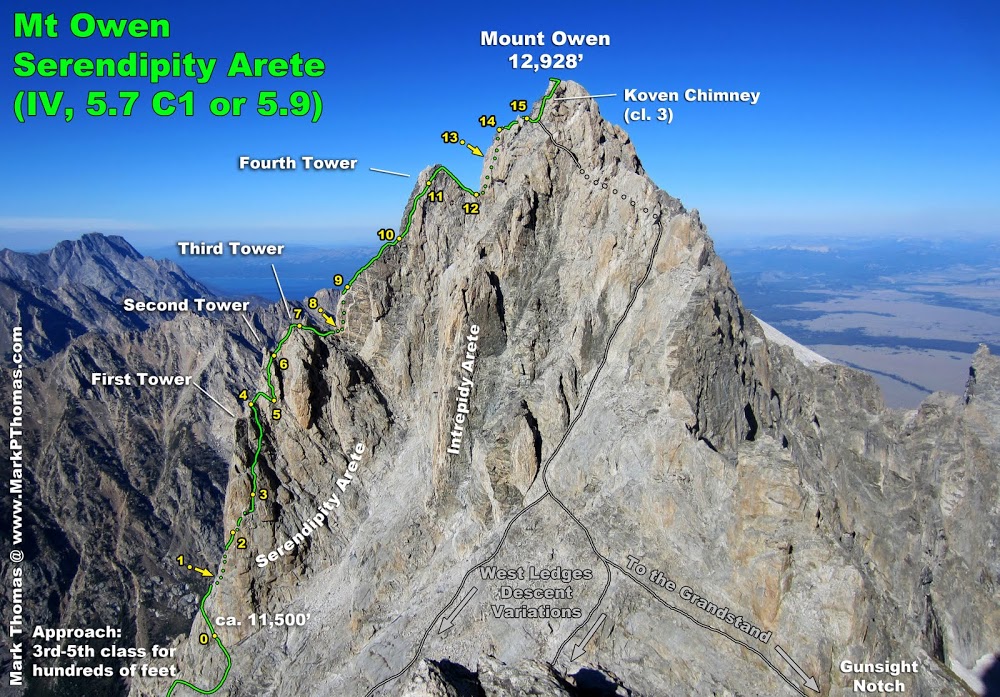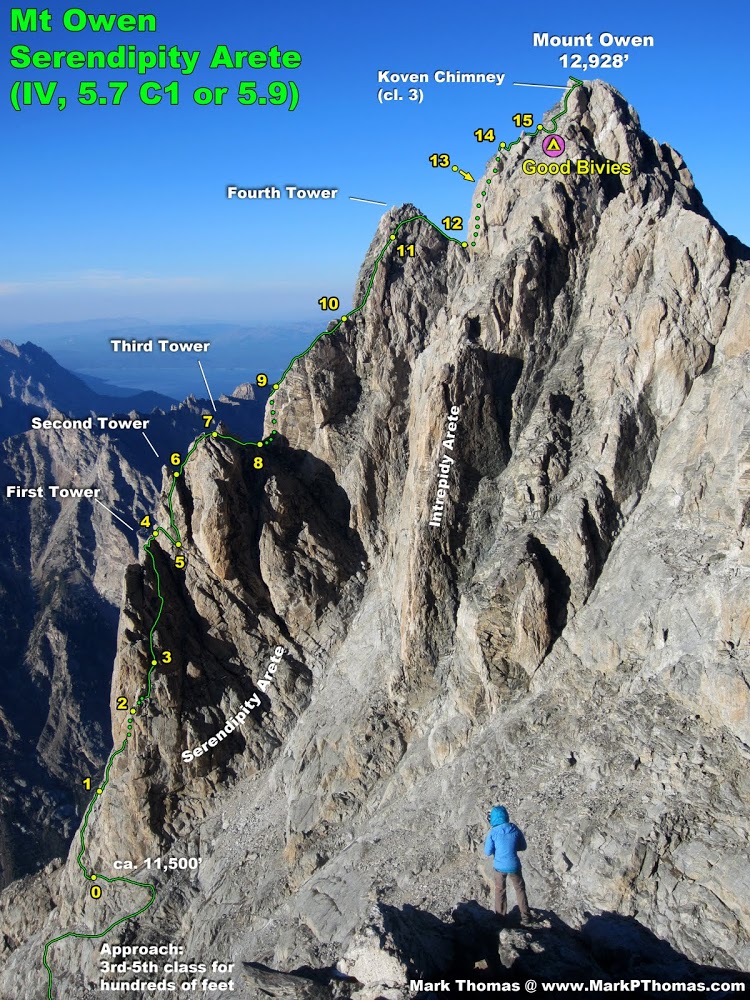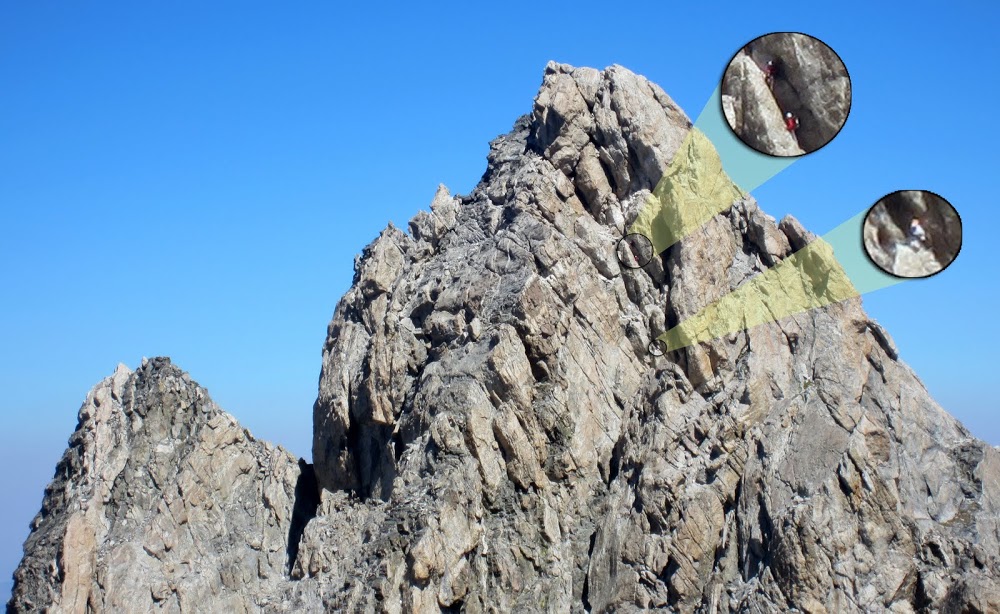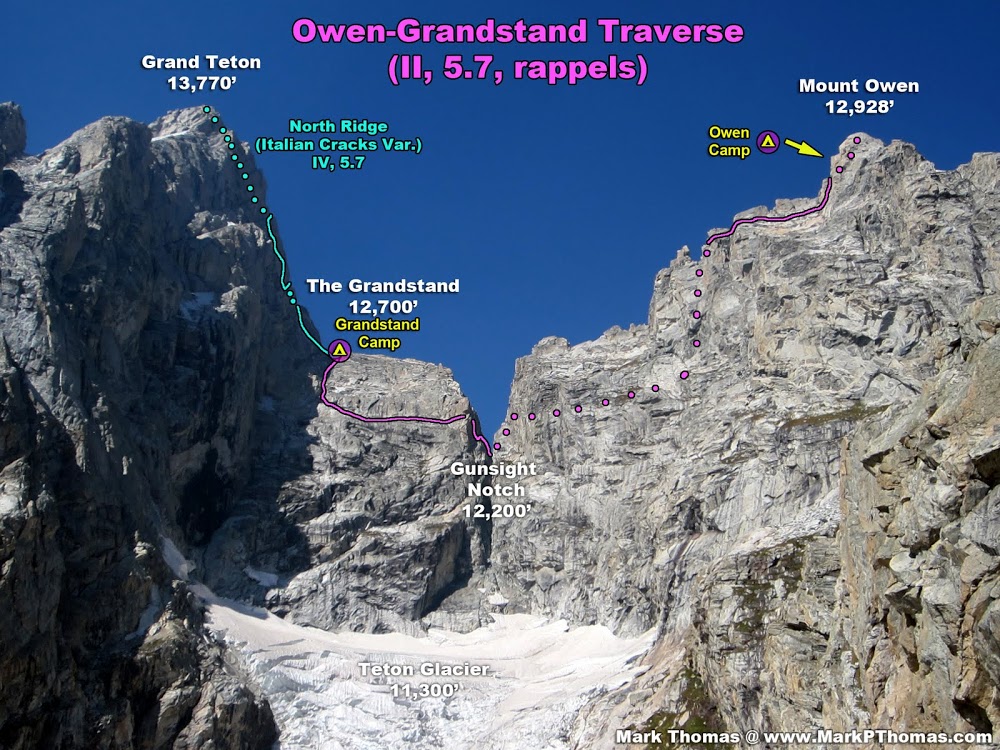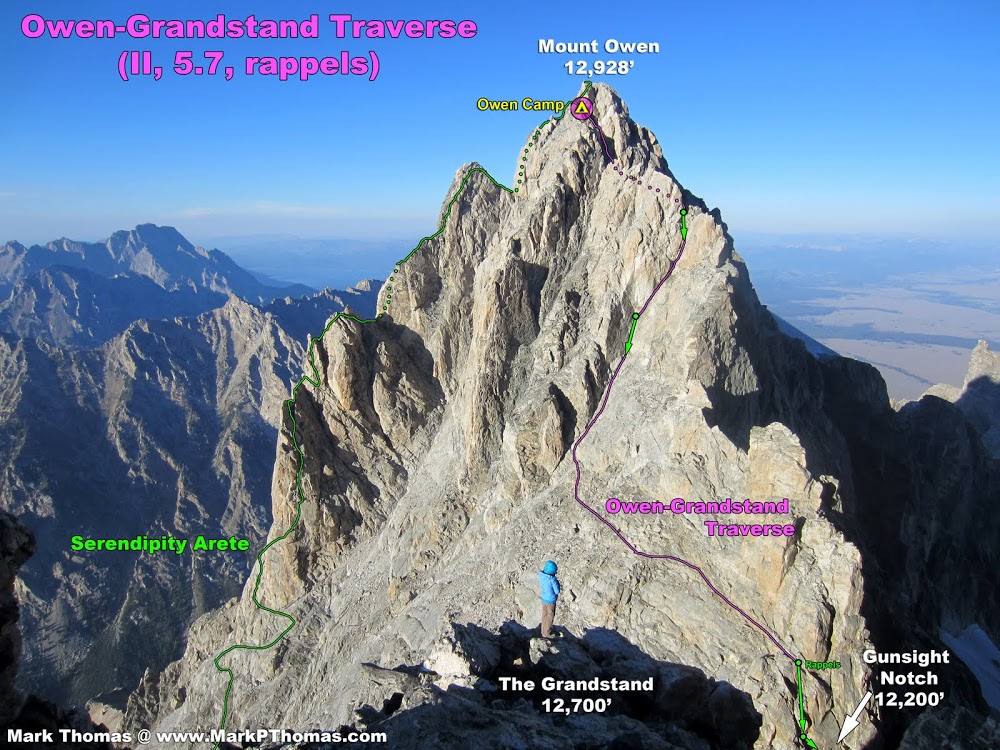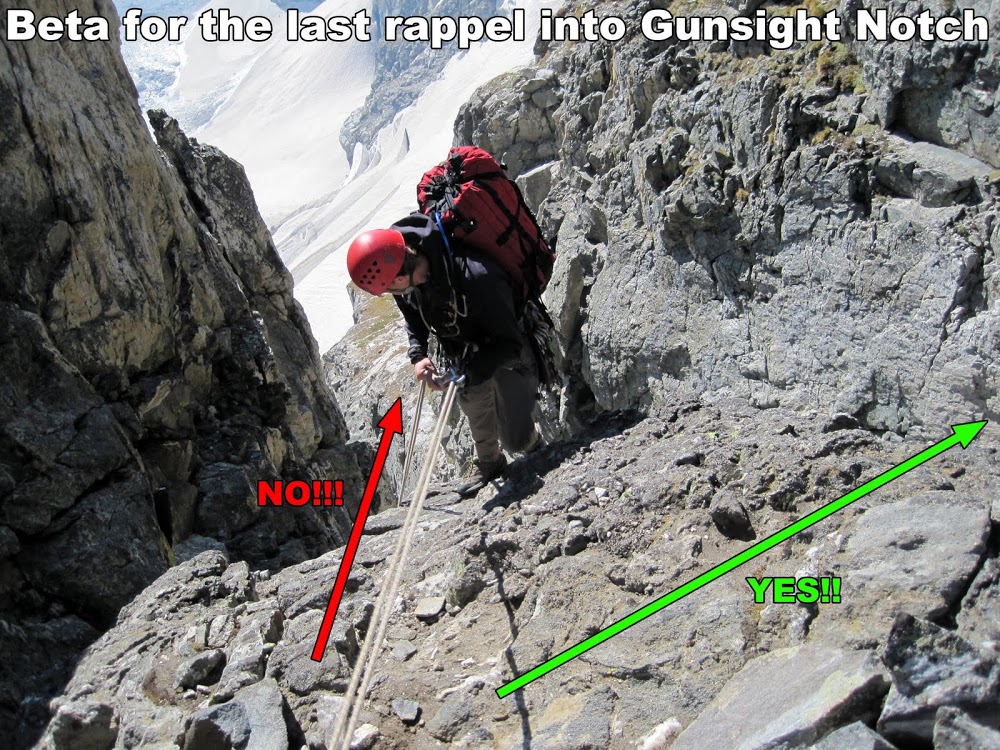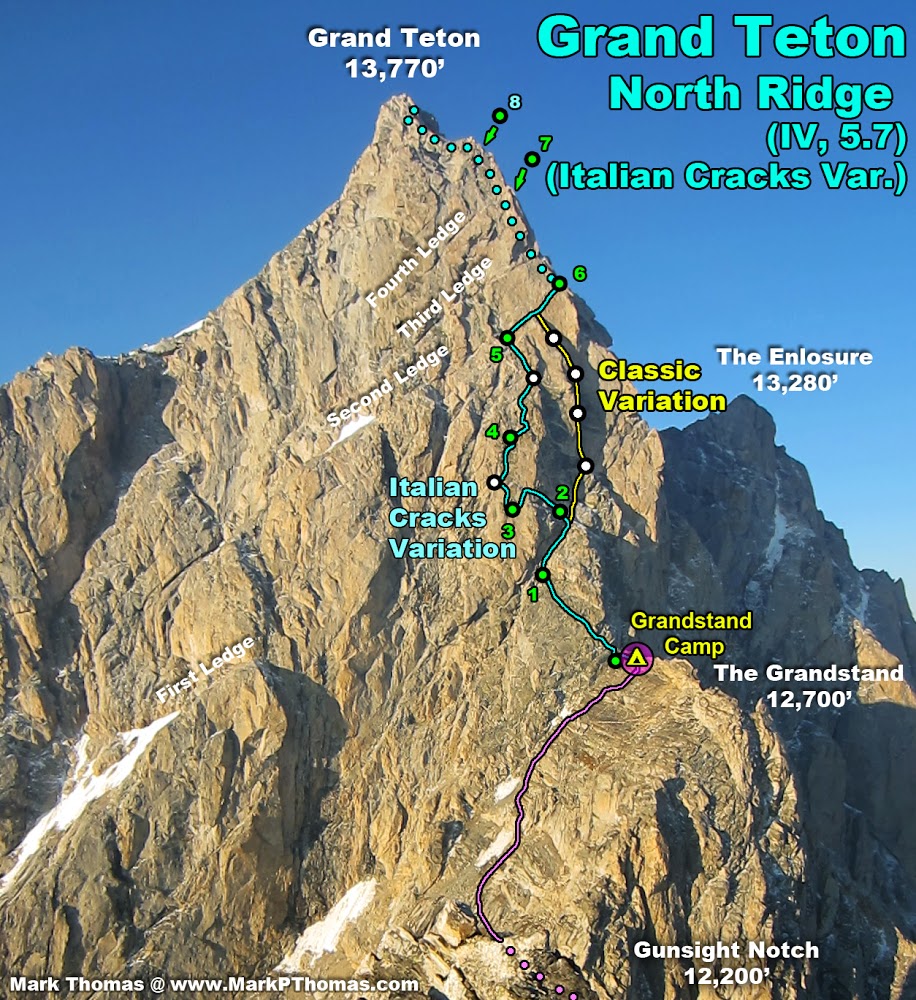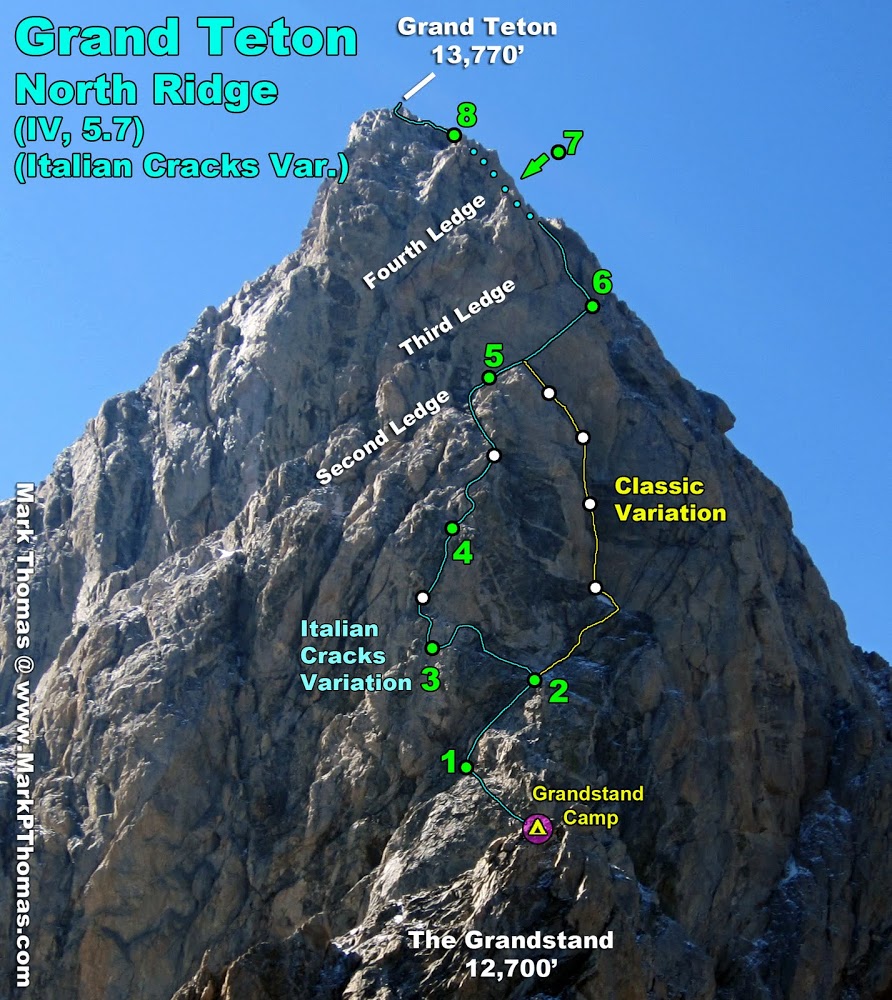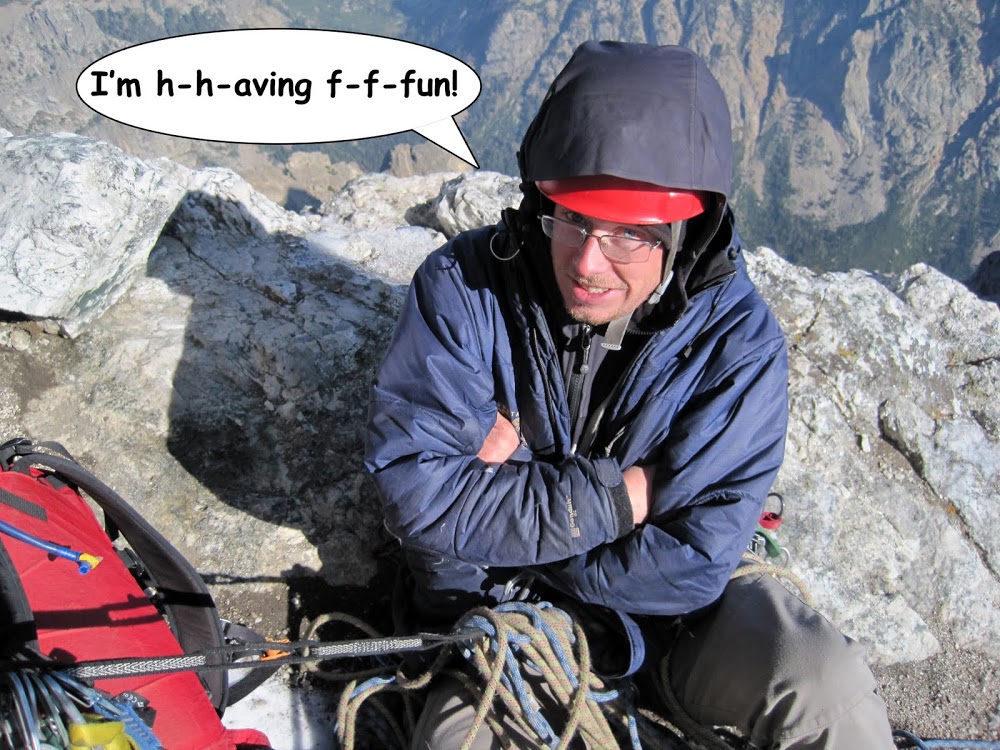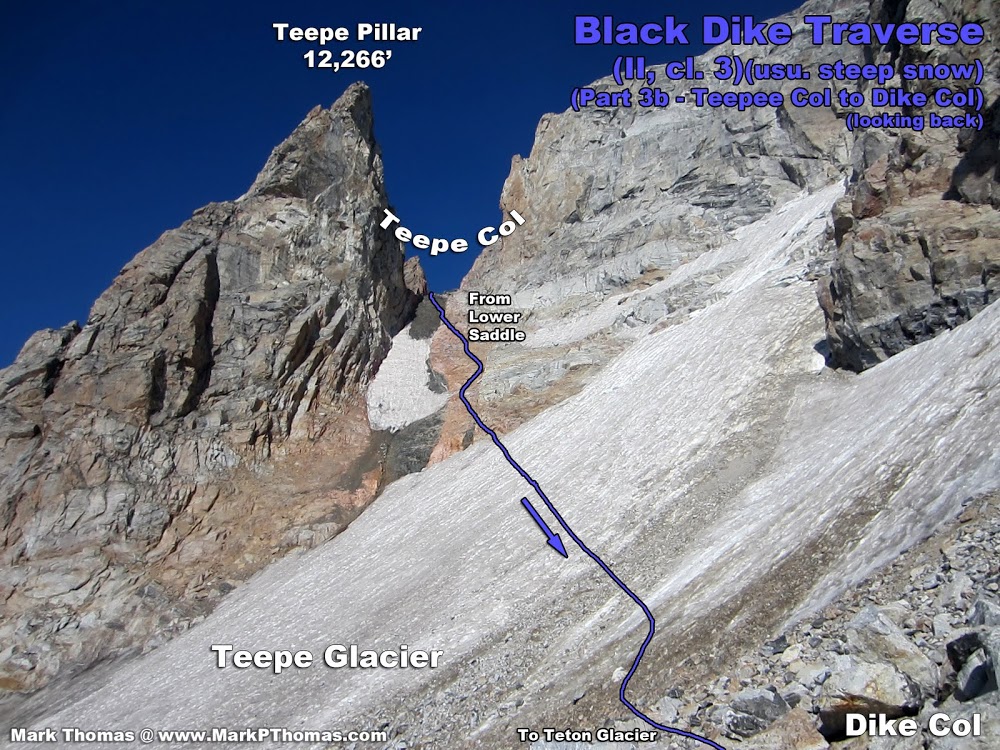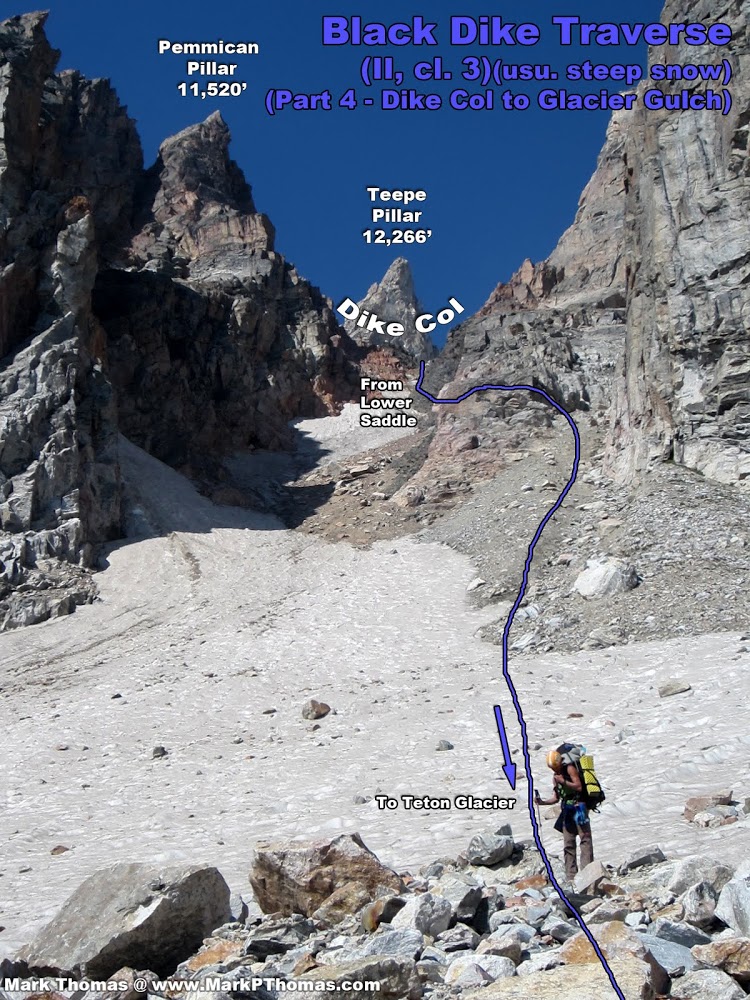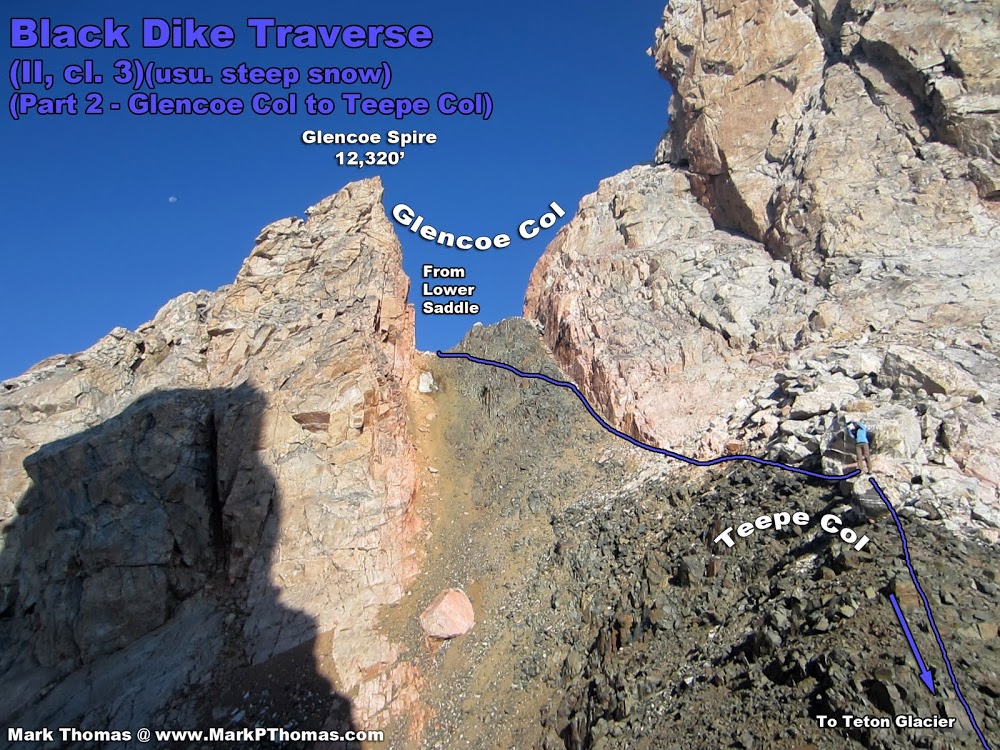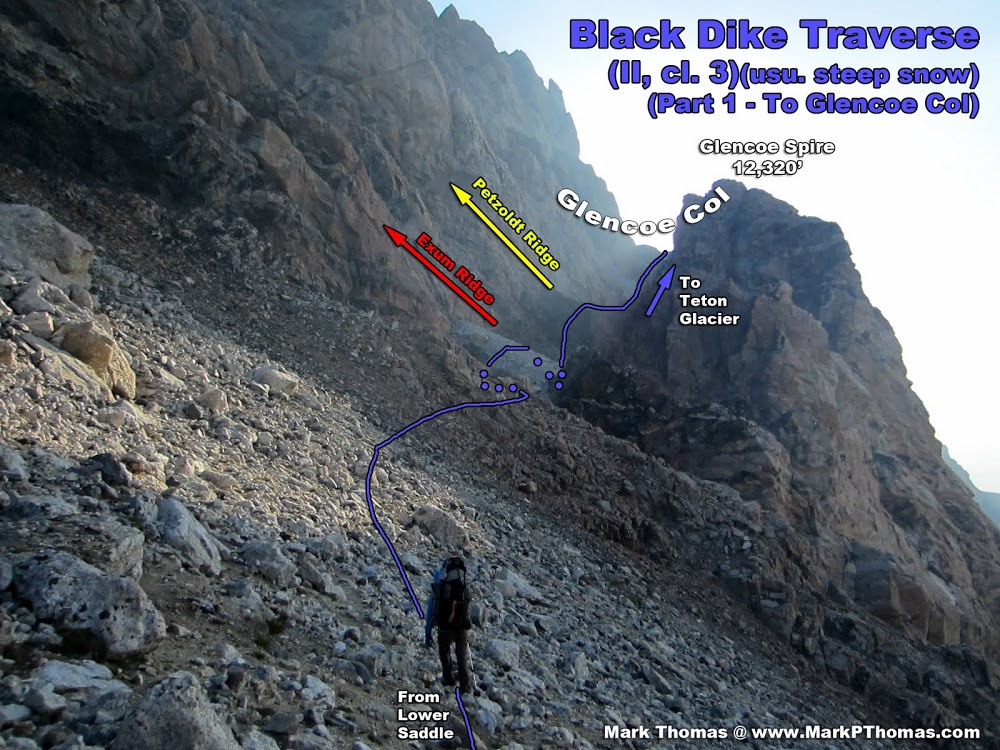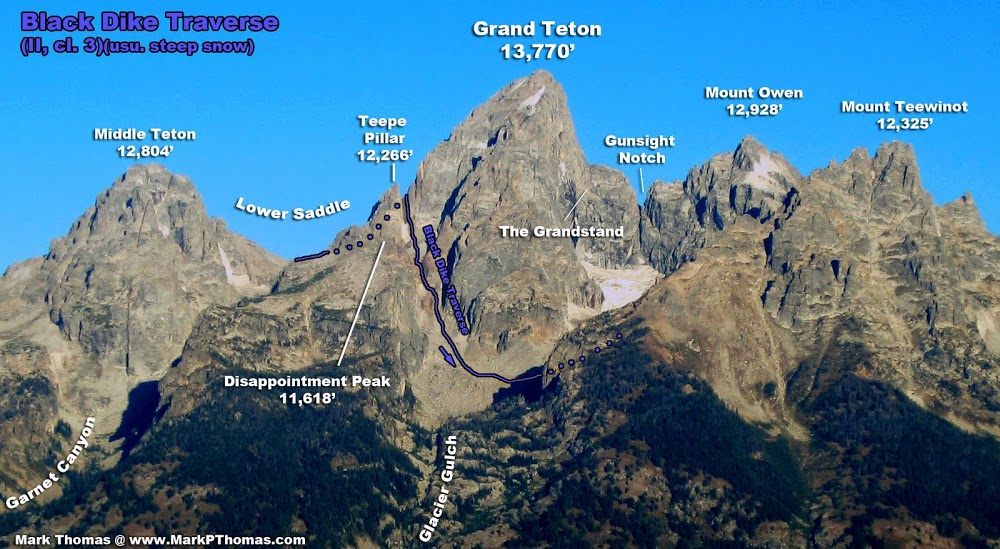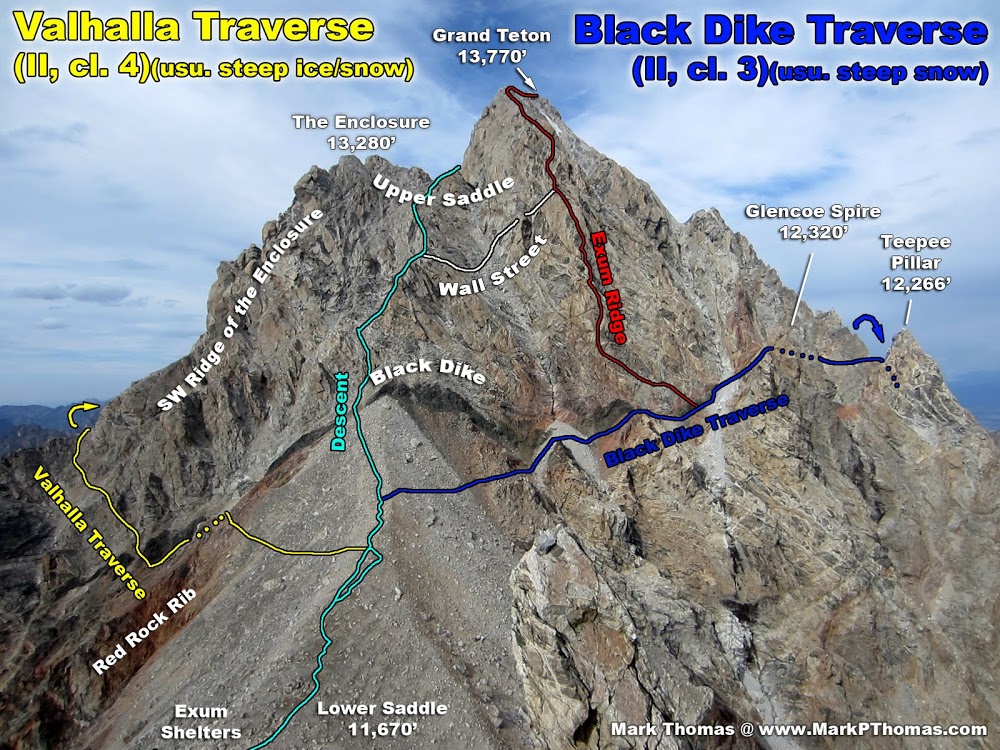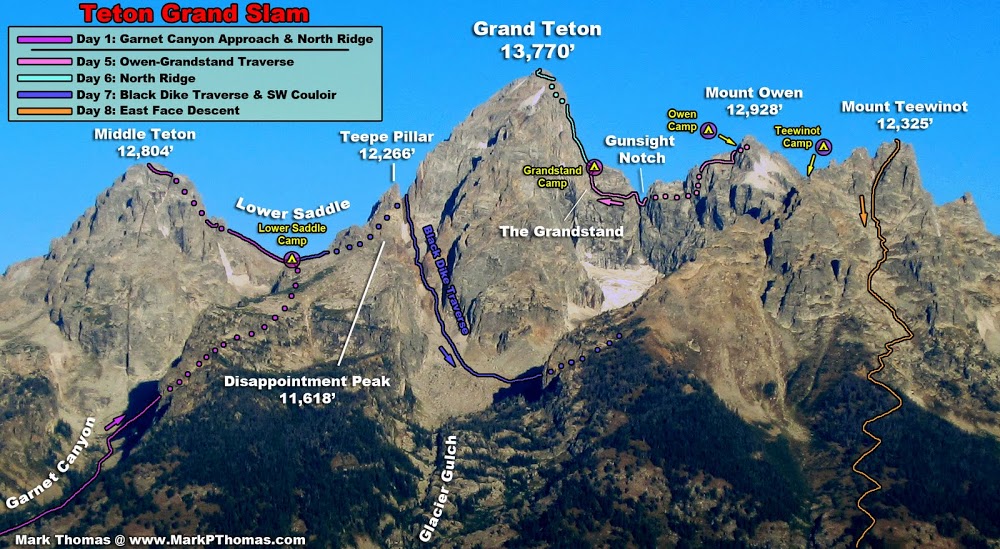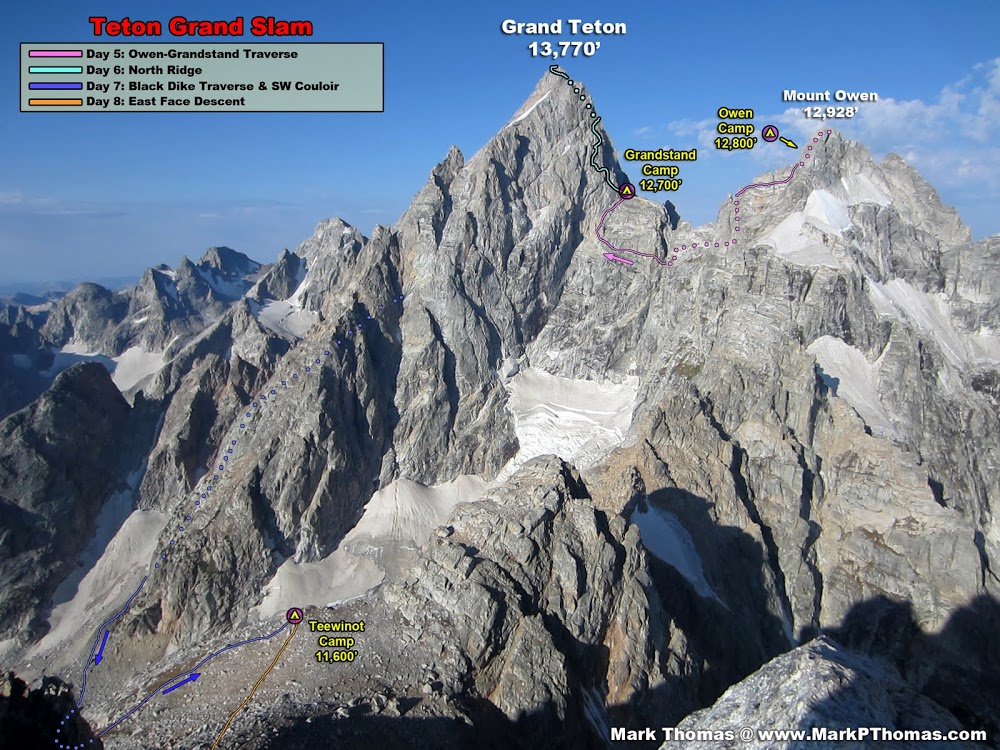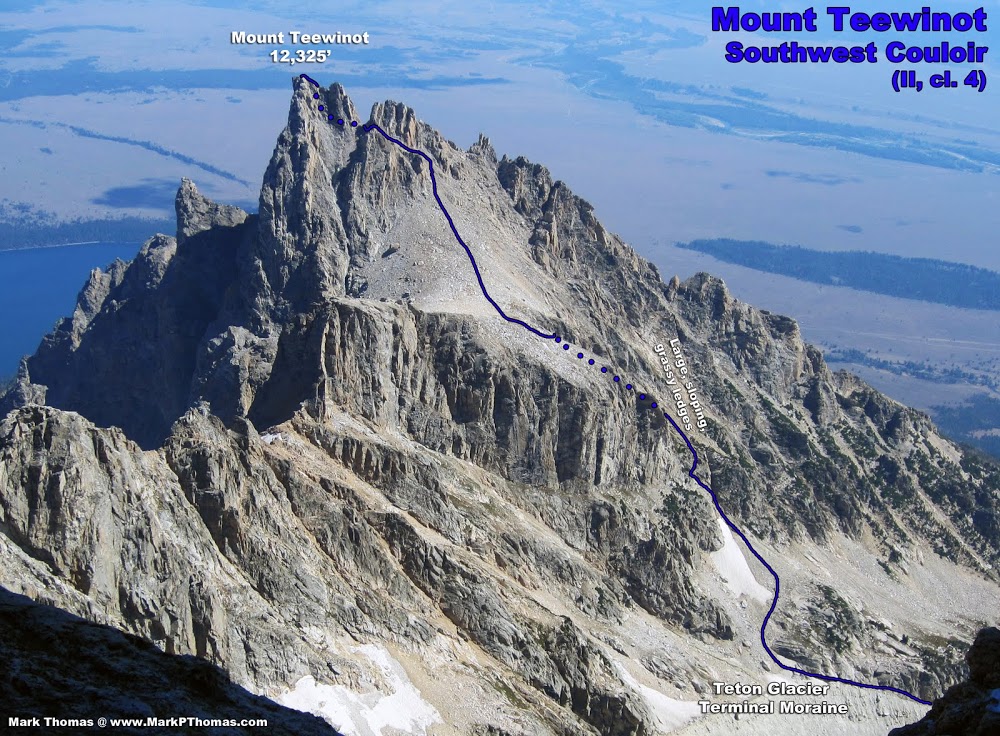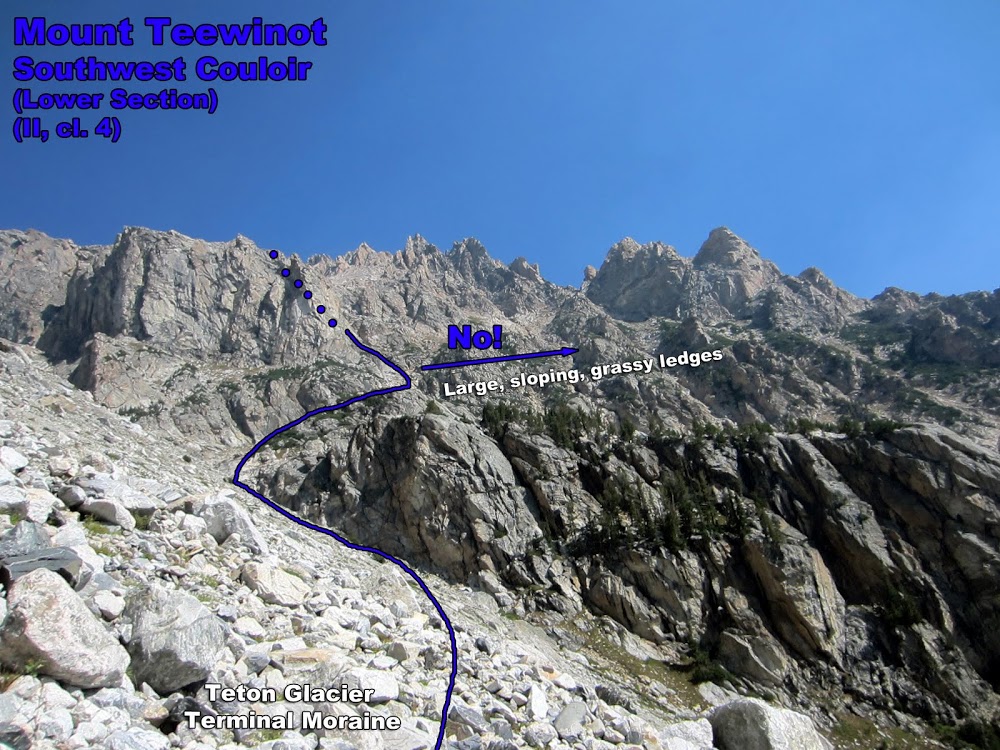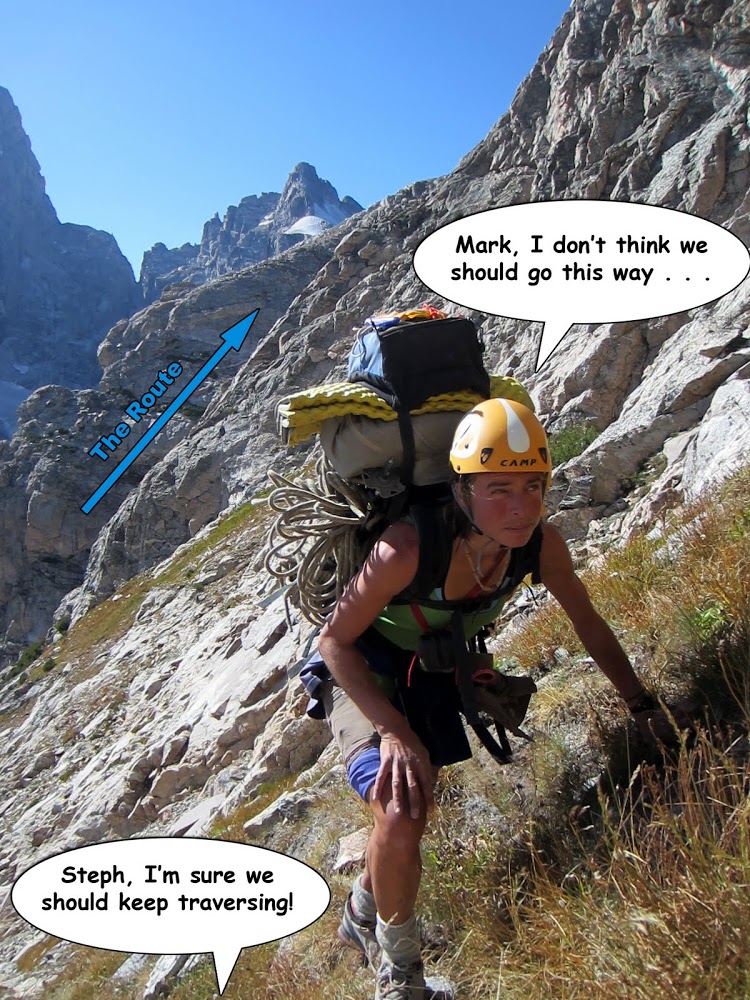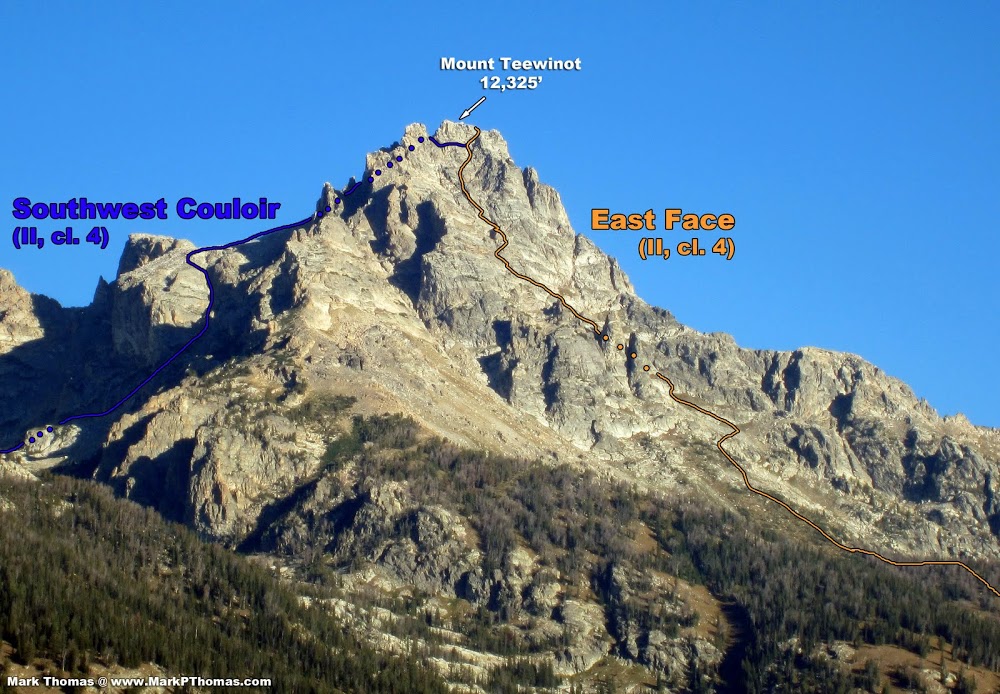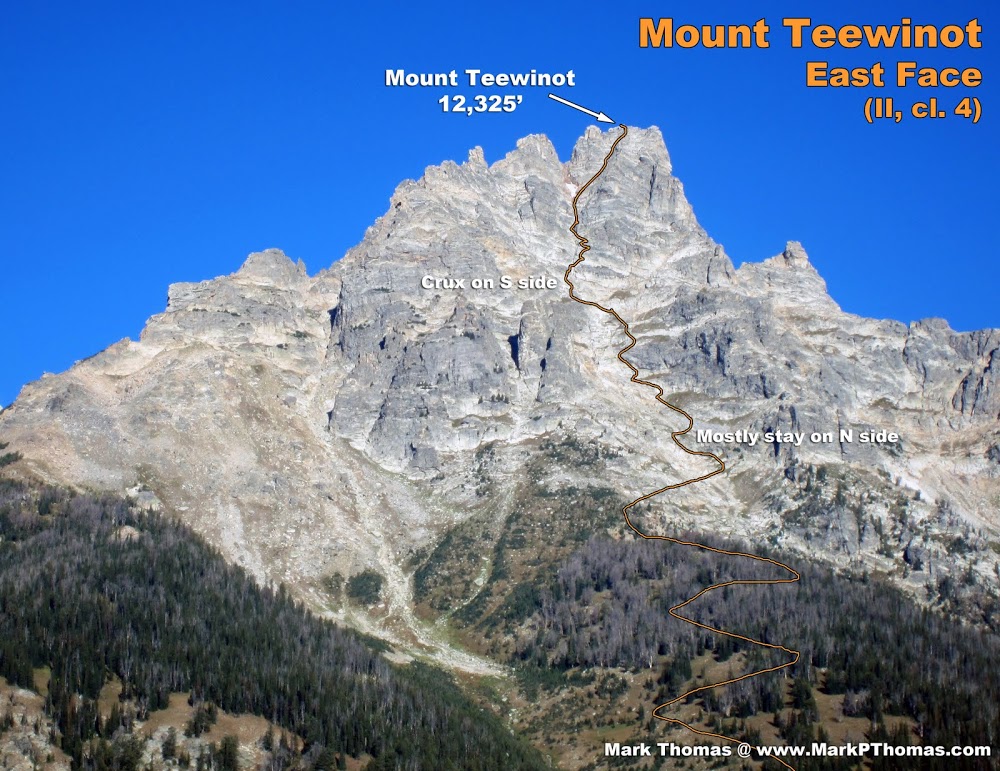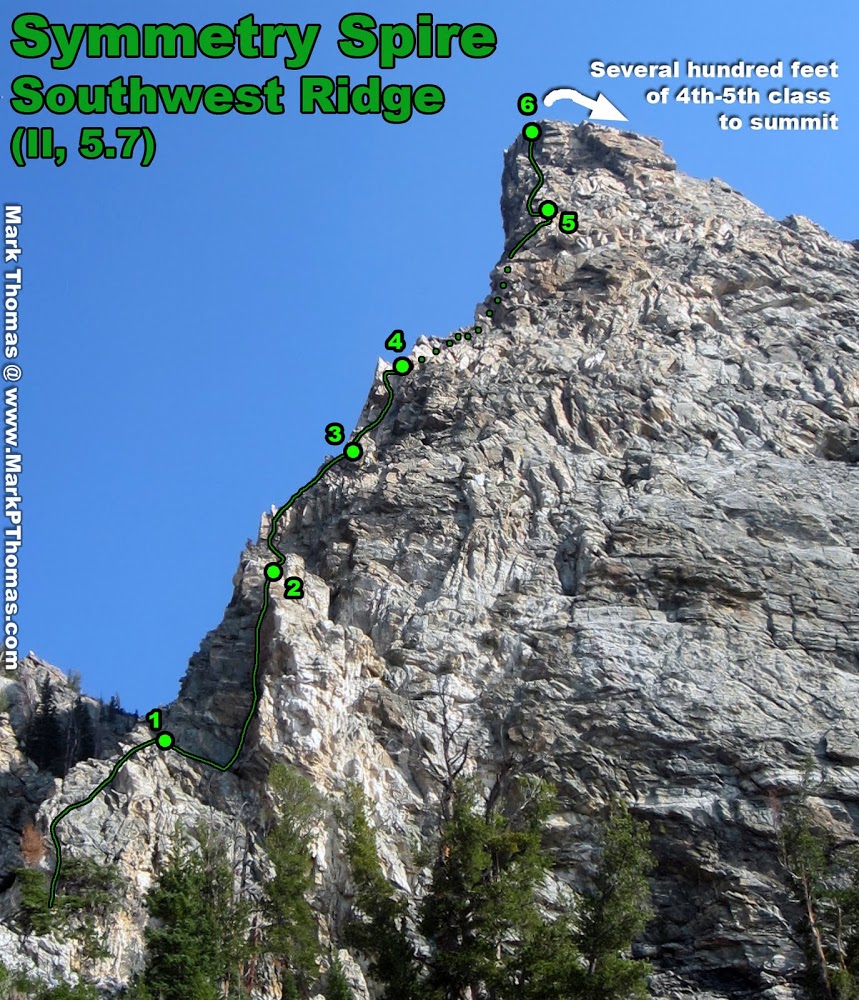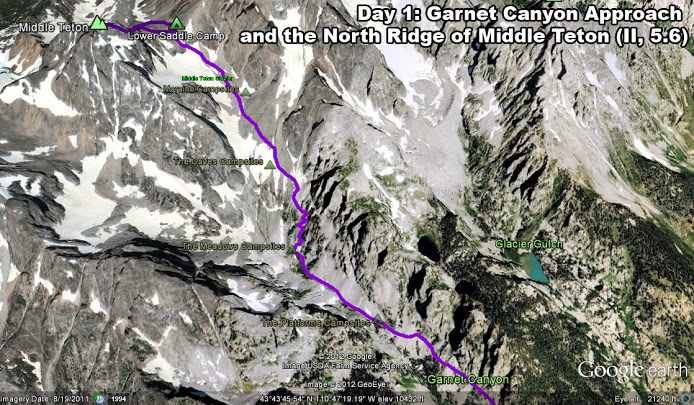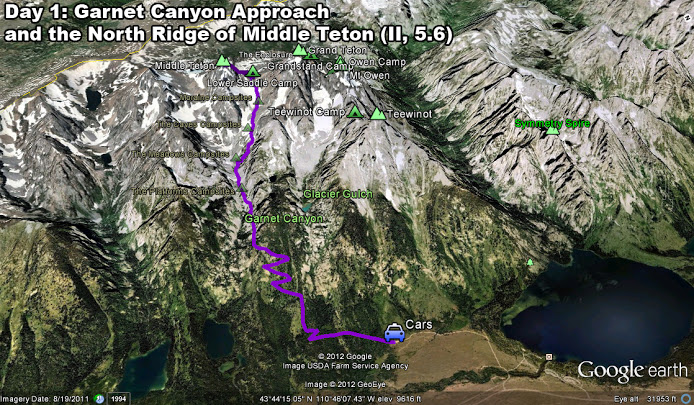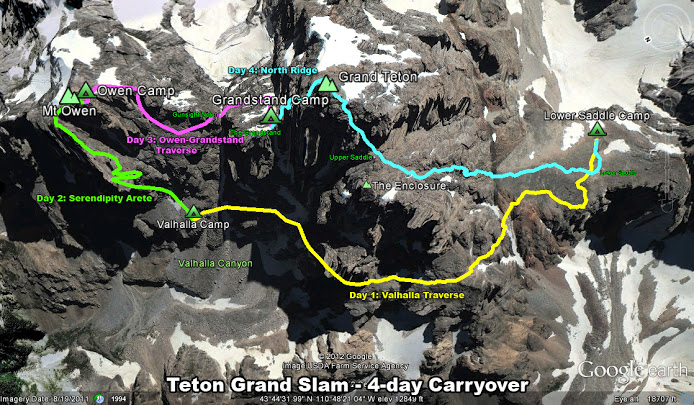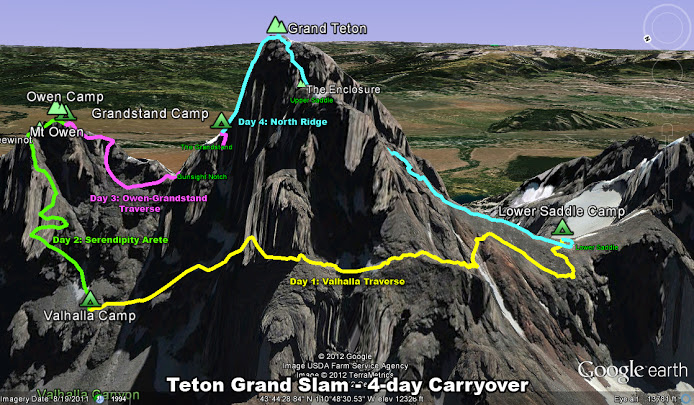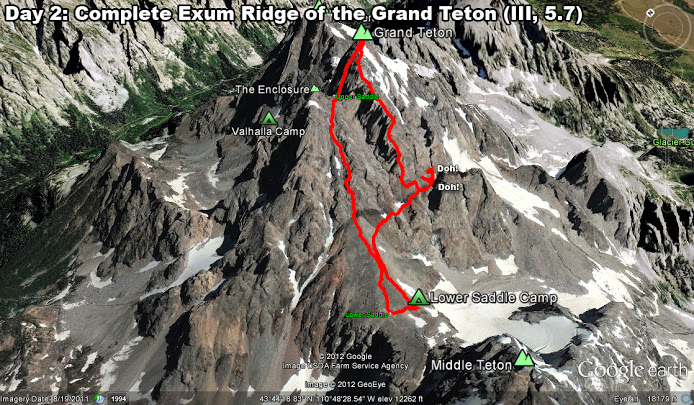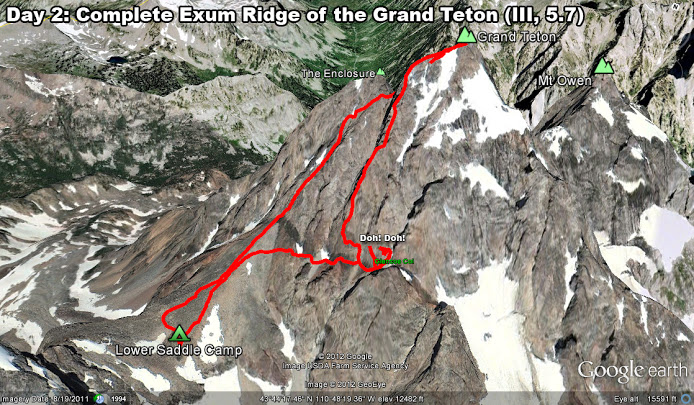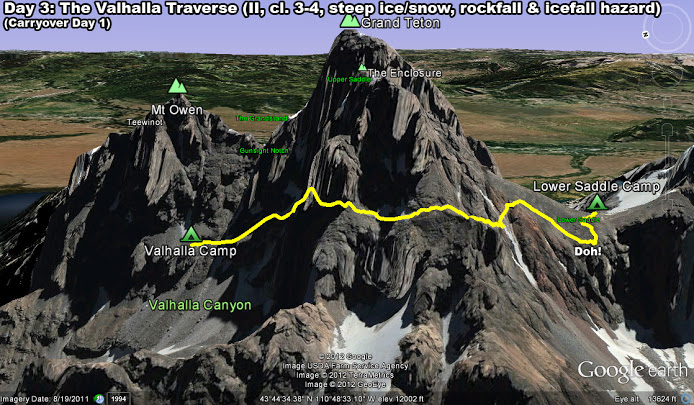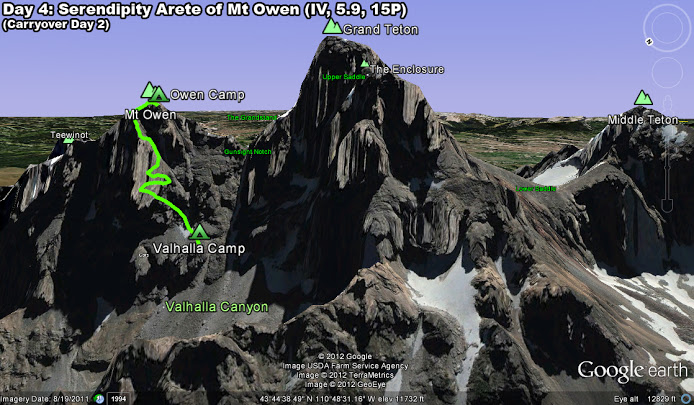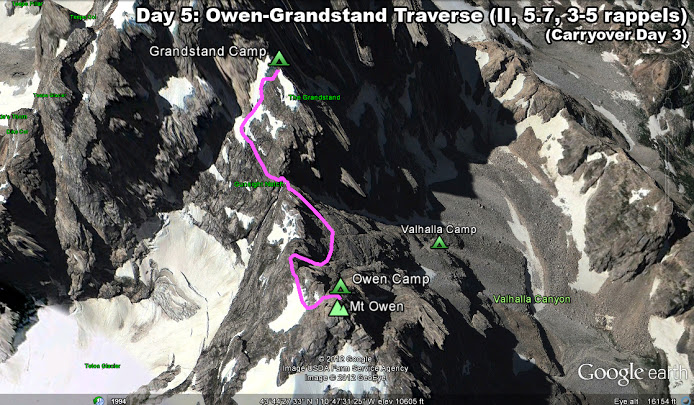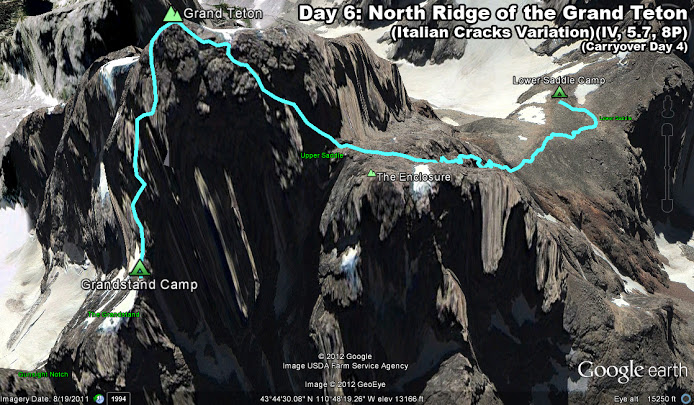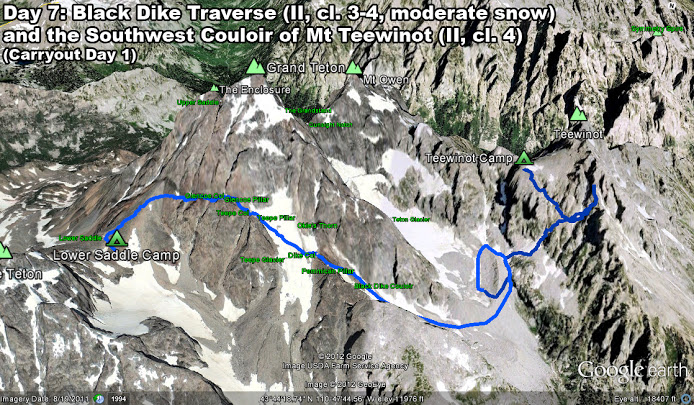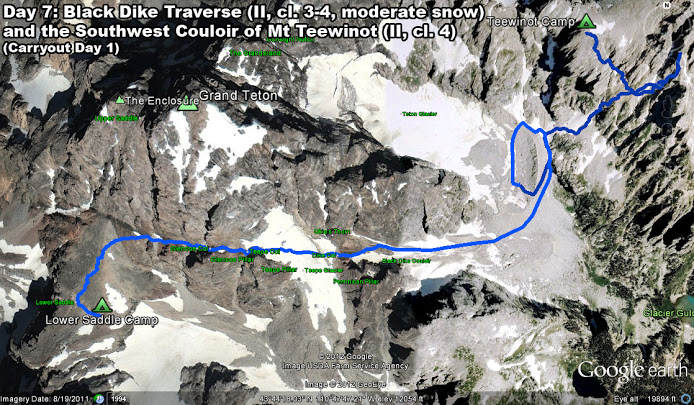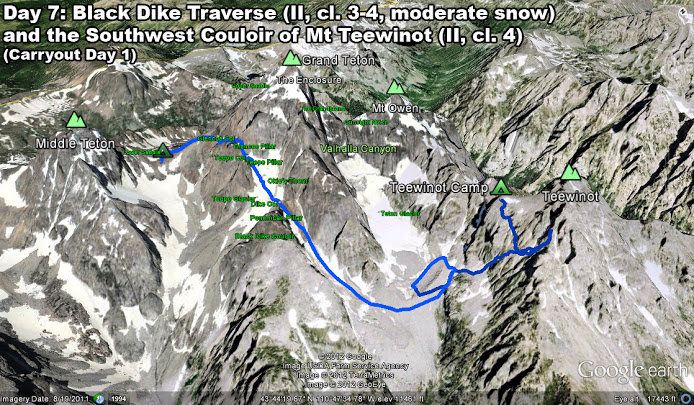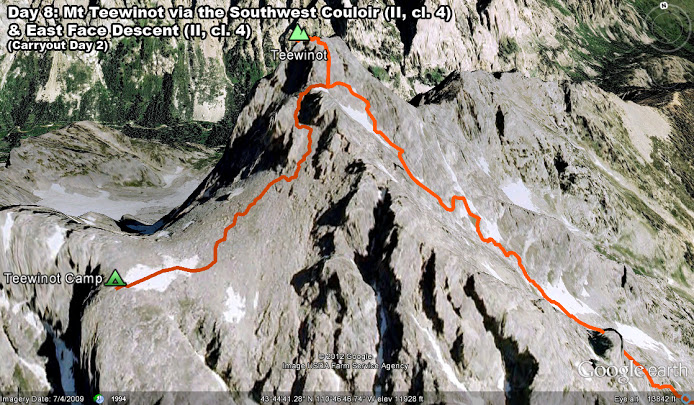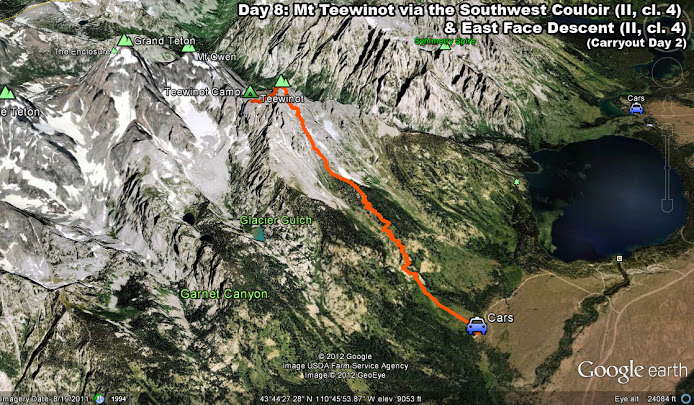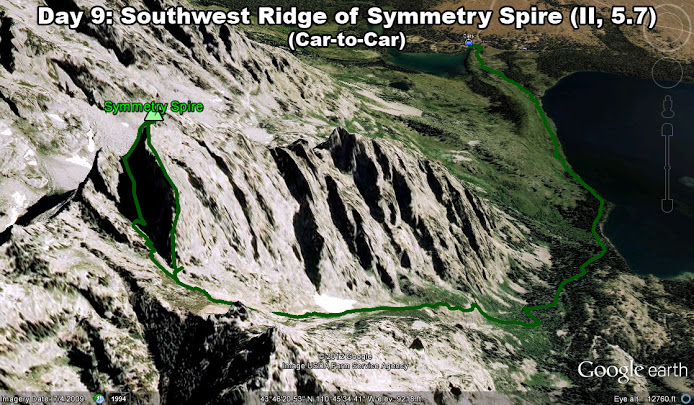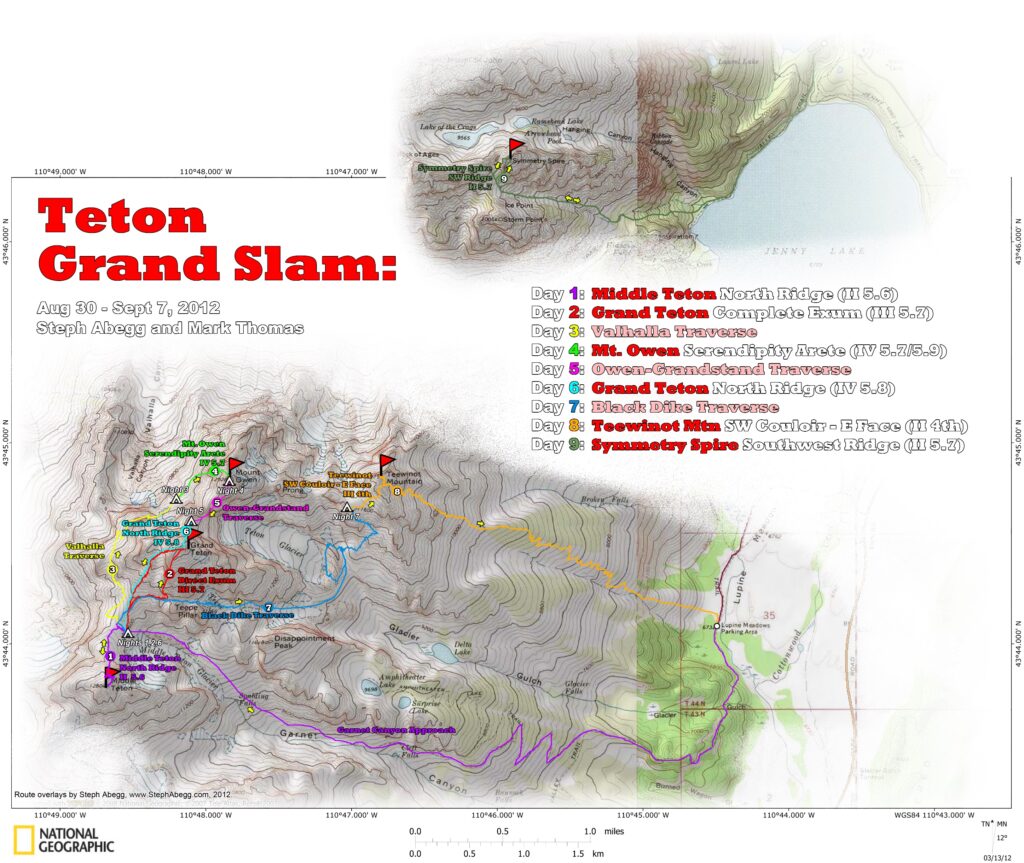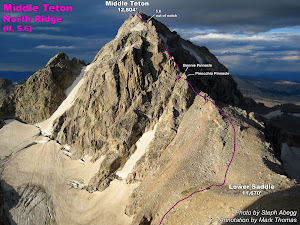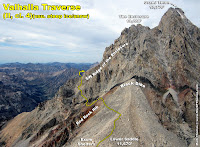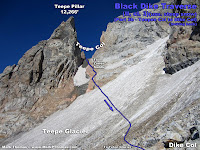On the summit of Teewinot. Photo by Mark Thomas.
Ever since I climbed the Grand Teton via the
Owen-Spalding to Upper Exum Ridge in 2007 (click link to go to that TR), I have wanted to return and climb the classic Complete Exum Ridge. My parents climbed this route in 1982—interesting note: this was their last summer of full-time climbing since I was to appear on the scene about 10 months later—and remembered it as one of their favorite climbs. So, when my friend Mark Thomas proposed a late-summer climbing trip to the Tetons, I was eager to join.
Of course, there are several great climbs we wanted to do in addition to the Complete Exum Ridge. So we developed a strategic multi-day link-up of a number of classic Teton climbs. First, we would establish a camp at the Lower Saddle below the Grand Teton; from here we would climb the North Ridge of the Middle Teton and the Complete Exum Ridge of the Grand Teton. Then we would pack up camp (leaving any extra food, fuel, batteries, etc. at the Lower Saddle), traverse around the Grand Teton's west side via the Valhalla Traverse, and carryover both Mt. Owen (via Serendipity Arête) and the Grand Teton (via the North Ridge) and end back to the Lower Saddle. After this, we would traverse around the south and east side of the Grand Teton via the Black Dike Traverse and establish camp on the Teton Glacier, from where we would climb the North Face of the Grand Teton. Finally, we would carryover Teewinot Mountain as we hiked back out to the car. It would certainly be a Grand Slam if we pulled it all off!
A constant concern in our trip planning was how weather and conditions could easily throw a hitch in our plans, especially since in the late summer the temperatures in the Tetons often dip below freezing and storms are a growing possibility. Indeed, a rather intense hail/snow storm hit the day we established our camp below Mt. Owen. The storm caused us to take an extra day on the carryover as well as deposited enough fresh snow on the north side of the Grand Teton that we decided to remove the now-icy North Face from our trip itinerary (we would replace it with a warmer day-pack romp up the Southwest Ridge of Symmetry Spire, a fun route my parents had also climbed on their 1982 trip). Even with the slight adjustment to our initial itinerary, our trip was still a smashing success. We climbed six 4-to-5-star Teton routes in nine days, and had a blast doing so.
The following page gives maps, route overlays, photos, and commentary of our Grand Slam adventures. Mark is the master of route overlays and has inspired many of my own route overlay styles, so I've included several of his overlays (as well as some photos) in this trip report as well. Make sure to scroll to the bottom of the page to see a rather impressive display of additional annotated photos and Google Earth overlays generated by Mark in the weeks following our trip.
Enjoy the armchair mountaineering about to ensue!
Also, a special note of thanks goes to the American Alpine Club since I had been awarded the "Live Your Dream" Climbing Grant for this trip. The grant helped fund my transportation to and from the Tetons, as well as provided another means to publish and share this trip report via the AAC submission guidelines.



